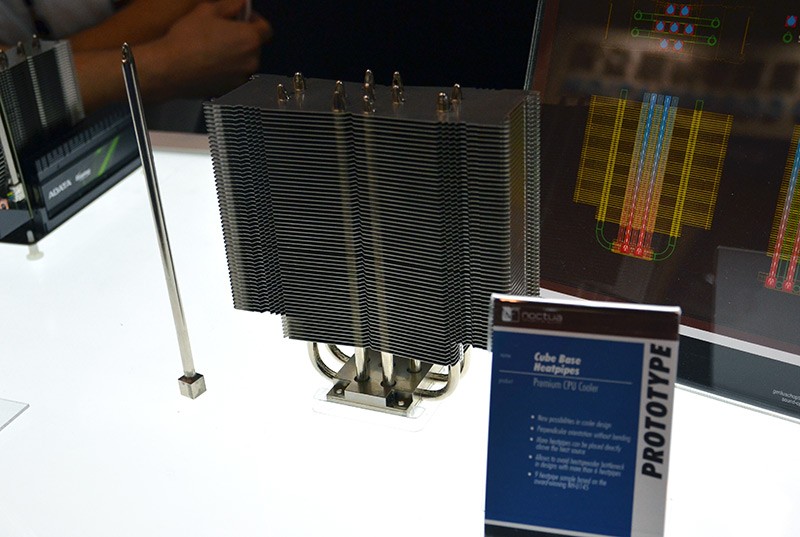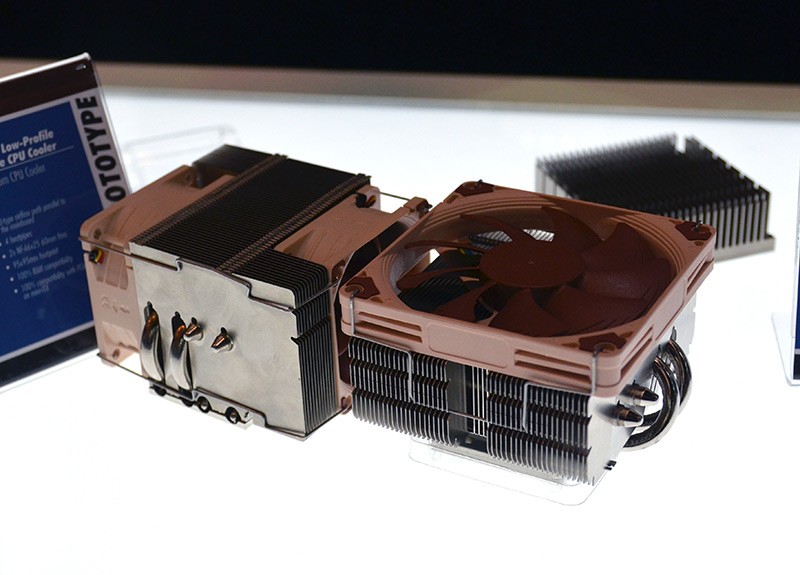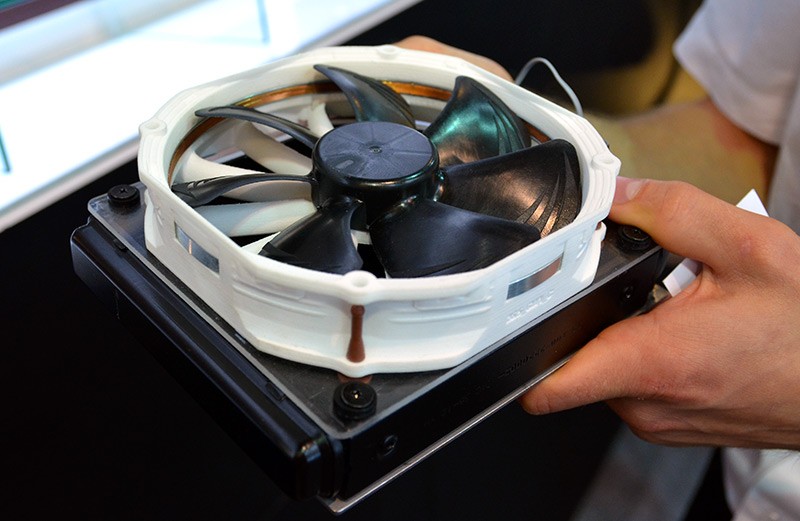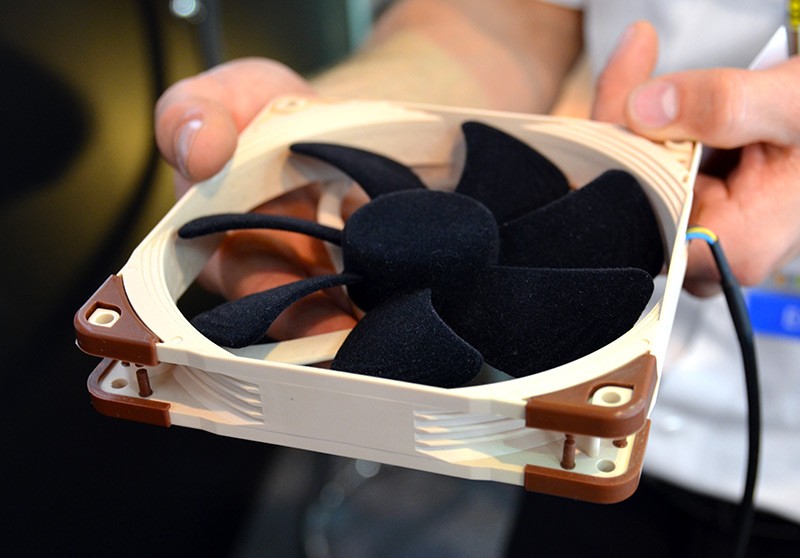I dropped by Noctua's booth at Computex 2014, where they had a range of prototype and upcoming coolers on show, as well as some very cool demonstrations of noise reduction technology.
Pretty much every product on Noctua's table hasn't been released yet, or is still in the prototype stage. A few of the products, such as the massive asymmetrical 150mm coolers, are designed to give maximum CPU cooling performance, while still giving room to the top PCIe slot on motherboards.

One of the main products Noctua's Jakob Dellinger highlighted to me was cube base perpendicular heatpipes, which are more effective at transferring heat than bent heatpipes that we usually see on CPU heatsinks. The cube base heatpipes are placed directly above the heat source, reducing heatspreader bottlenecks.

Noctua also had a few low profile coolers for small form factor PCs and HTPCs, one with a 92mm fan mounted on the top, and another with two 60mm fans for cases that might not have vents directly above the CPU.
But the most exciting product Noctua had on show at Computex is the world's first CPU cooler with active noise cancelation (ANC). The way this cooler works is very clever: the RoboSub fan contains a magnetic coil around the edge of the fan, with individual magnets in each of the fan blades. Electricity flows through the coil, which is used to vibrate the fan blades in such a way that anti-noise signals are created.

This means that, compared to a system which uses a speaker to create anti-noise signals, the noise reduction occurs at the source, so it's effective at basically any distance from the cooler. However due to the complexities of noise created from fans, it doesn't make the fan completely silent, instead it reduces frequency spikes creating a more pleasant sound that's less noticeable.
Noctua had a live demonstration of their active noise cancelation cooler at their booth: with ANC switched off, there were noticeable whirring noises created from vibrations; but when ANC was switch on the sound profile was smooth and dull, like air quietly flowing through the heatsink. Needless to say it was very impressive, but not quite ready for public release.

Another prototype product Noctua was showing off was a flocked surface fan. Essentially this fan is coated with a fibrous velvet-like material, which creates a turbulent boundary layer that reduces flow separation, while also dampening reflected noise. The end result is a fan that's 2 dB quieter when flow isn't impeded.
Unfortunately these fans aren't very useful when placed directly up against a heatsink or radiator, as airflow behind the fan is turbulent and somewhat noisy anyway. At this stage, Noctua isn't sure whether these flocked surface fans will hit the market.